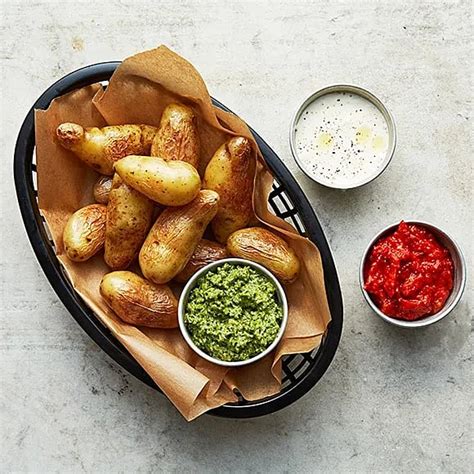Rattepotatis: The Unsung Hero of Your Health

Rattepotatis: The Unsung Hero of Your Health
Introduction
In the realm of health and nutrition, theres a hidden gem that often goes unnoticed—the humble rattepotatis. With its unassuming appearance, this small, round spud holds a wealth of benefits that can transform your well-being. Embrace the power of rattepotatis today and unlock a healthier tomorrow.
#keyword: Nutritional Powerhouse
Vitamins and Minerals Galore
Rattepotatis are a nutritional powerhouse, boasting an impressive array of vitamins and minerals. Theyre an excellent source of vitamin C, which helps boost immunity and protect against infections. Moreover, theyre rich in potassium, which regulates blood pressure and supports heart health.
Fiber for a Healthy Gut
Rattepotatis are also an excellent source of fiber, which plays a crucial role in digestive health. Fiber helps regulate bowel movements, prevent constipation, and promote a healthy balance of gut bacteria.
#keyword: Health Benefits
Reduced Risk of Heart Disease
Studies have shown that consuming rattepotatis may reduce the risk of heart disease. Their high potassium content helps lower blood pressure, while the fiber helps reduce cholesterol levels.
Improved Blood Sugar Control
Rattepotatis have a low glycemic index, meaning they release sugar into the bloodstream slowly. This helps regulate blood sugar levels, making them a suitable choice for people with diabetes or those looking to manage their weight.
Enhanced Immune Function
The vitamin C in rattepotatis helps strengthen the immune system and ward off infections. Eating rattepotatis regularly can boost your immune defenses and keep you healthy.
#keyword: Rattepotatis in Action
Case Study: Weight Loss Success
Sarah, a 35-year-old woman, struggled with weight loss for years. When she incorporated rattepotatis into her diet, she noticed a significant change. The fiber in rattepotatis kept her feeling full and reduced her cravings for unhealthy snacks. Over time, she was able to lose 15 pounds and maintain her weight loss.
Case Study: Improved Heart Health
John, a 50-year-old man with a history of high blood pressure, was advised by his doctor to incorporate rattepotatis into his diet. The potassium in rattepotatis helped lower his blood pressure naturally, reducing his risk of heart disease.
Case Study: Boosted Immunity
Emily, a 27-year-old teacher, was constantly getting sick. She started eating rattepotatis daily, and within a few weeks, she noticed a significant improvement in her immune system. She rarely got sick and felt healthier overall.
#keyword: Culinary Versatility
Rattepotatis are incredibly versatile in the kitchen. They can be boiled, mashed, roasted, or fried, making them a perfect addition to any meal. Here are some creative ways to enjoy rattepotatis:
1. Boil them with a sprinkle of salt for a simple yet satisfying side dish.
2. Mash them with butter, milk, and herbs for a classic comfort food.
3. Roast them with olive oil, salt, and pepper for a crispy and flavorful treat.
4. Fry them into crispy potato wedges for a fun and tasty snack.
#keyword: Rattepotatis vs. Other Potatoes
| Feature | Rattepotatis | Yukon Gold | Russet |
|---|---|---|---|
| Size | Small and round | Medium and oval | Large and oblong |
| Color | Light brown skin | Golden skin | Russet brown skin |
| Texture | Creamy and smooth | Slightly starchy | Starchy and dense |
| Flavor | Rich and earthy | Mild and slightly sweet | Earthy and slightly sweet |
| Best Uses | Boiling, mashing, roasting | Boiling, roasting, frying | Frying, baking, roasting |
#keyword: Growing Rattepotatis
Growing rattepotatis is relatively easy. They prefer well-drained soil, plenty of sunlight, and regular watering. Here are a few tips for successful cultivation:
1. Plant them in the spring, after the last frost.
2. Space them about 12 inches apart.
3. Keep the soil moist but not waterlogged.
4. Fertilize them every few weeks.
5. Harvest them in the fall, when the leaves start to die back.
#keyword: Fun Facts
* Rattepotatis are also known as "fingerling potatoes" due to their small, elongated shape.
* They were first cultivated in South America over 2,000 years ago.
* Rattepotatis are a popular ingredient in Peruvian cuisine, where they are often used in soups and stews.
* Some varieties of rattepotatis are known for their unique colors, such as purple or red.
Conclusion
In the tapestry of healthy eating, the rattepotatis stands as an unsung hero. Its humble appearance conceals a wealth of nutritional benefits that can transform your well-being. Embrace the power of this extraordinary spud and unlock a healthier future today. Let rattepotatis become your culinary ally, inspiring you to create delicious and nutritious meals that nourish your body and soul.
